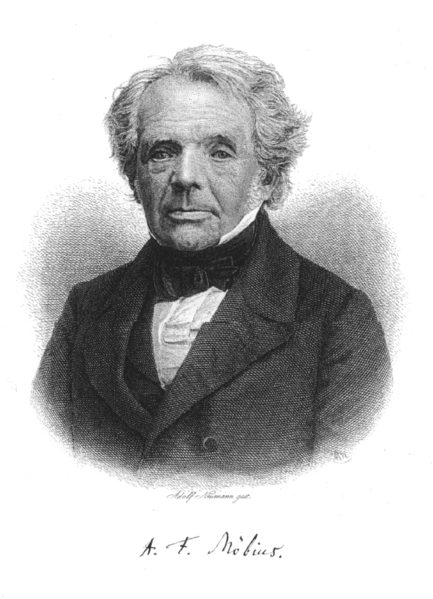<Back to Index>
- Mathematician August Ferdinand Möbius, 1790
- Painter Agnolo di Cosimo (Il Bronzino), 1503
- King of France and of Navarre Louis XVIII, 1755
PAGE SPONSOR

August Ferdinand Möbius (November 17, 1790 – September 26, 1868) was a German mathematician and theoretical astronomer.
He is best known for his discovery of the Möbius strip, a non-orientable two-dimensional surface with only one side when embedded in three-dimensional Euclidean space. It was independently discovered by Johann Benedict Listing around the same time. The Möbius configuration, formed by two mutually inscribed tetrahedra, is also named after him. Möbius was the first to introduce homogeneous coordinates into projective geometry.
Many mathematical concepts are named after him, including the Möbius transformations, important in projective geometry, and the Möbius transform of number theory. His interest in number theory led to the important Möbius function μ(n) and the Möbius inversion formula. In Euclidean geometry, he systematically developed the use of signed angles and line segments as a way of simplifying and unifying results.
Möbius was born in Schulpforta, Saxony-Anhalt, and was descended on his mother's side from religious reformer Martin Luther. He studied mathematics under Carl Friedrich Gauss and Johann Pfaff. Möbius died in Leipzig in 1868 at the age of 77.